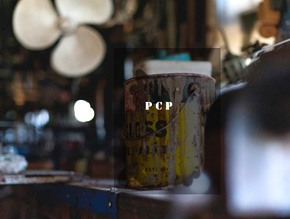
Wood preservatives as pcp
Banned, but still found in homes
The Chemicals Prohibition Ordinance in Germany came into force in 1989. Since then, toxic wood preservatives may no longer be sold indoors. Nevertheless, property buyers still come across the subject of “wood preservatives” time and again. This is not surprising when you consider that most houses in Germany were built between 1950 and 1980 and are now once again attracting young buyers. Wood preservatives were used in particular for load-bearing components such as roof trusses and ceiling beams and are not immediately recognizable to home buyers. The following essay will take a closer look at the most dangerous representatives of chemical wood preservatives.
Pentachlorophenol (PCP) is at the top of the risk comparison with other products
PCP is a wood preservative that was widely used due to its strong fungicidal and bactericidal properties. It was used in particular to treat and protect wood against mold, fungi and insects. Compared to other wood preservatives, however, PCP has a number of harmful effects that make it particularly questionable. On the one hand, PCP is characterized by its high persistence in the environment and can accumulate in living organisms (bioaccumulation). This property means that it can still be found in treated buildings or in the environment years after application, creating a long-term source of exposure for humans and animals.
PCP is also known to have a number of toxicological effects on the human body. This can lead to symptoms such as headaches, dizziness, fatigue and, in severe cases, motor disorders. There is also evidence that PCP can impair the immune system and increase susceptibility to infections. Finally, PCP is also associated with liver damage, which can manifest itself in increased liver enzyme levels in the blood. The International Agency for Research on Cancer (IARC) has classified PCP as “possibly carcinogenic to humans” in Group 2B.
Other wood preservatives with similarly risky properties
In addition to PCP, there are other wood preservatives that are classified as questionable due to their toxicological properties and environmental impact. Some of these substances have been regulated or banned in many countries due to their harmful effects on health. These substances include, among others:
Lindane
or γ-hexachlorocyclohexane is an insecticide that was also used as a wood preservative in the past. It is neurotoxic and can damage the nervous system with prolonged exposure. Lindane is also suspected of being carcinogenic and affecting the hormonal system. The use of lindane has been severely restricted worldwide by the Stockholm Convention on Persistent Organic Pollutants (POPs).
Dichlorodiphenyltrichloroethane (DDT) is mainly known as an insecticide. In the past, it was also occasionally used as a wood preservative.
DDT
is persistent in the environment and can accumulate in the food chain. It is suspected of being carcinogenic and causing hormonal disorders. The use of DDT is severely restricted worldwide by the Stockholm Convention on Persistent Organic Pollutants (POPs).
Arsenic compounds, which were often used in combination with chromium and copper in CCA wood preservatives, are also known for their toxicity and carcinogenicity. Arsenic can cause skin lesions and increase the risk of various types of cancer. The use of arsenic-containing wood preservatives has been restricted or banned in many countries for applications involving close contact with humans.
Chromium(VI)
compounds have been used in chromate-containing wood preservatives, especially in combination with copper and arsenic (as CCA – Chromated Copper Arsenate) for the treatment of exterior wood. Chromium(VI) is highly toxic and known to be carcinogenic. It can cause skin irritation and can lead to severe respiratory diseases if inhaled. The use of CCA has been restricted in many countries for applications that allow direct contact with humans, such as playground equipment or garden furniture.
Creosote
derived from the distillation of tar, has traditionally been used as a wood preservative for railroad ties and telephone poles. It contains a variety of chemical compounds, some of which are carcinogenic. Exposure to creosote can cause skin and respiratory irritation and, with prolonged contact, can lead to skin cancer. The use of creosote is restricted in the EU for the general public.
